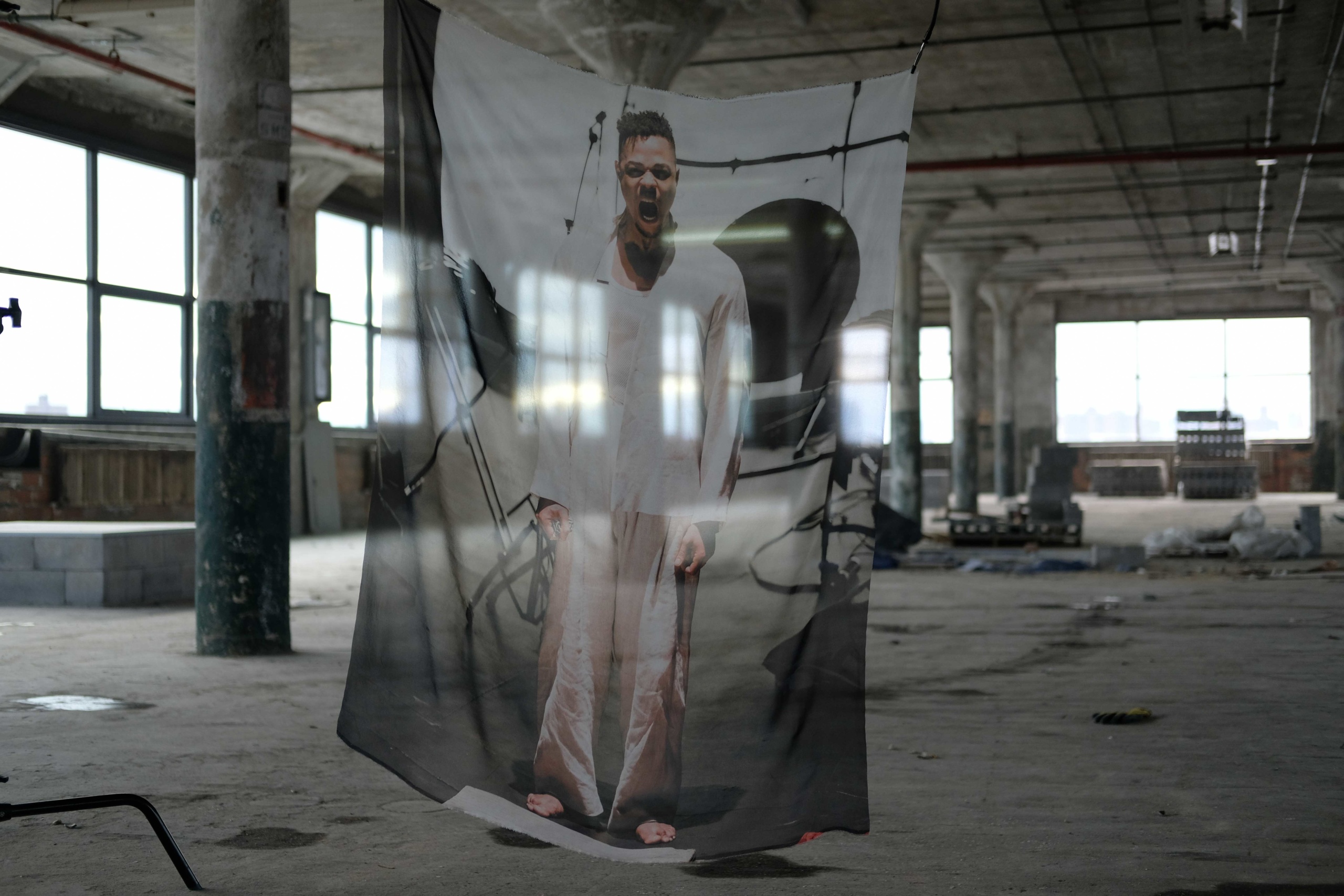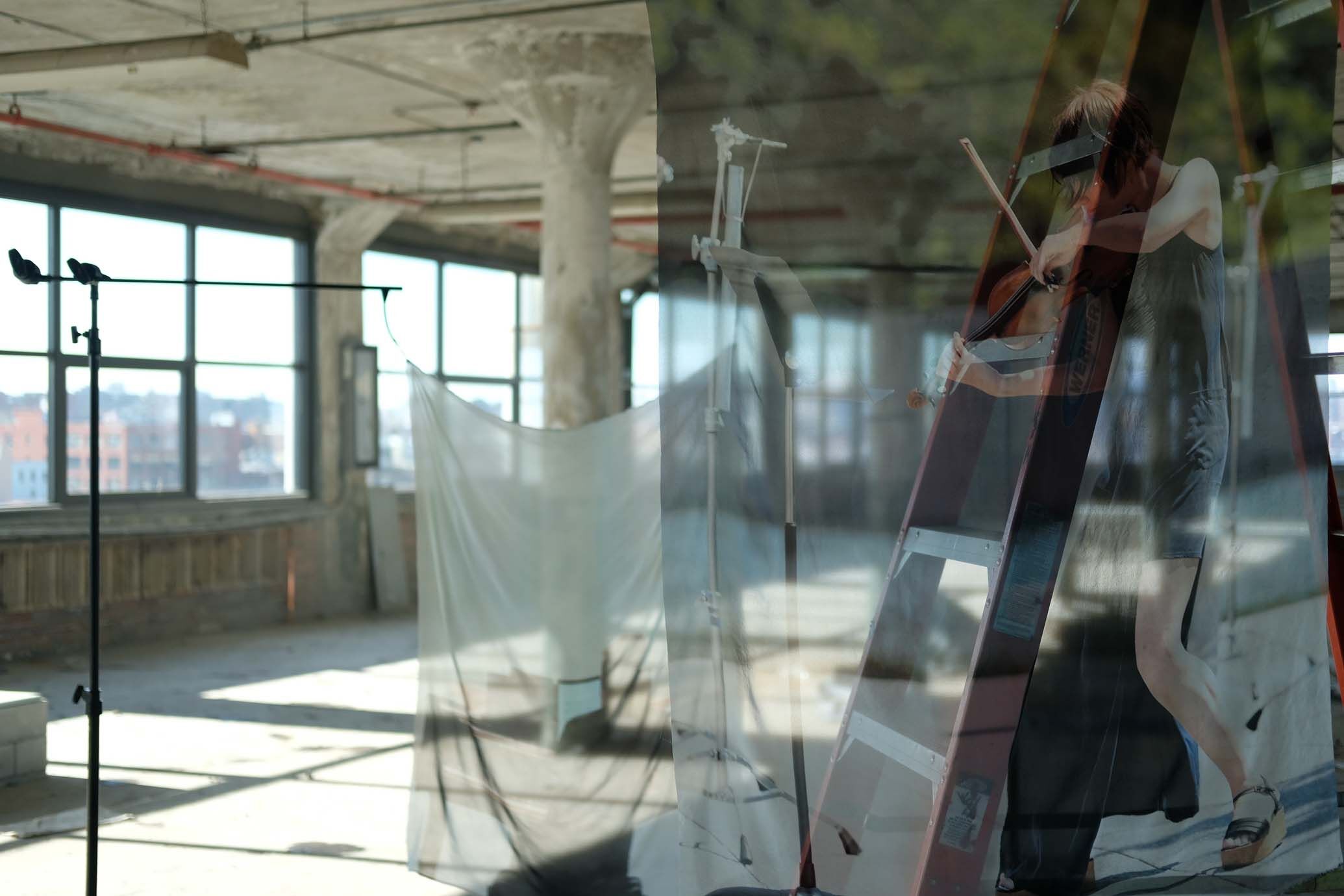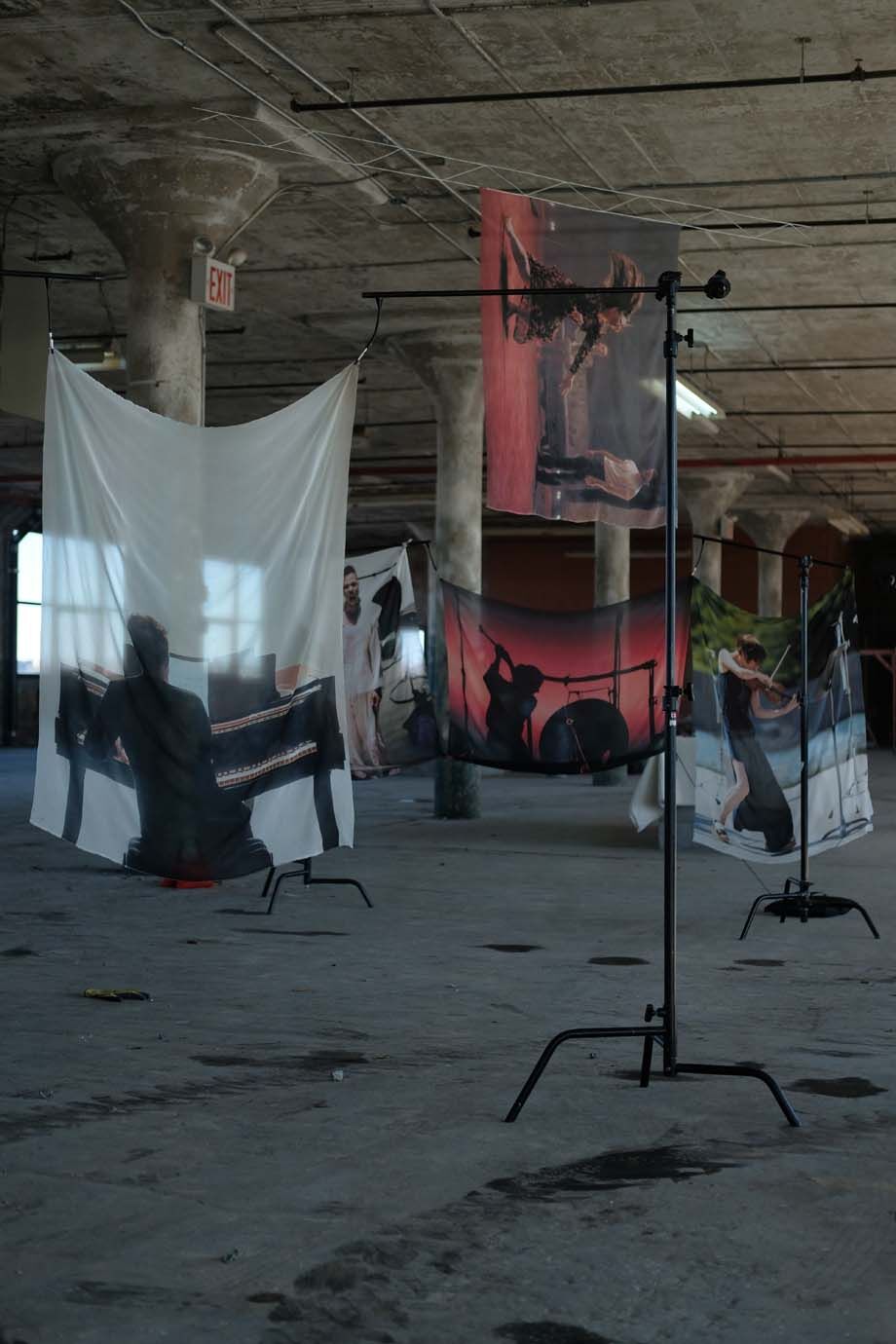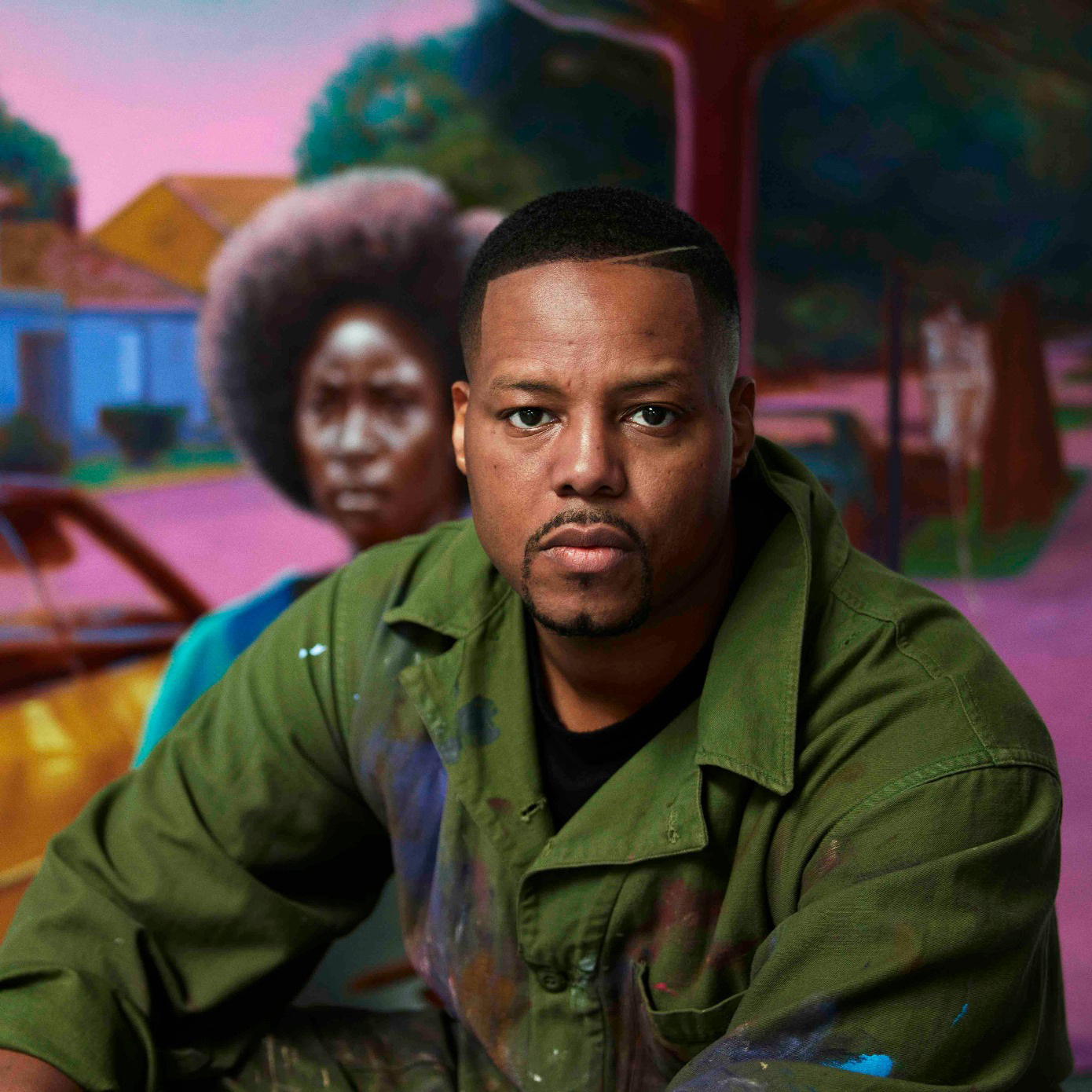
Mid-August dusk on a mountainside in Stamford, rural Vermont, contoured by cascades of apple trees, blueberry bushes, natural ponds and open fields. Henry Purcell’s incantatory “The Cold Song” from his 1691 opera, King Arthur, punctuates the air through barn walls. Soon, artists trickle out from this sound source towards the farmhouse, edging to dinner, some with pages of Rosalind Krauss’s seminal 1979 text, “Sculpture in the Expanded Field,” in hand. Preparations are already deep underway for a multi-course feast of foods grown and raised on the mountainside: a nightly occurrence. Artists take their places around the long wooden table. Before dessert, musicians erupt, unannounced, into offerings of shared sonic nourishment. Then a pitch-dark plunge instigated by dancers into a well water pool; an ensuring shot of whisky to warm. All this, an archetypal day’s menu to be echoed and riffed upon in the ensuing days.
“Utopia,” “absolute space,” and “air” are among the words these artists use to evoke their stints here, built upon alchemies of action that echo the ethos of Black Mountain College. Named “Certain Bird,” dancer Marta Miller’s home, a former llama farm whose barns have morphed into sites for rehearsal(and impromptu performances), has become an incubator for a three-year-old—and already acclaimed—tribe of itinerant, category-confusing dancers, singers, and instrumentalists known as AMOC (shorthand for the American Modern Opera Company), who converge here for a month every summer to play, read, produce and perform work, hone their process and, ultimately, be.

In 1987, Gilles Deleuze provoked that “the aim is [...] to find the conditions under which something new is produced (creativeness).” Conditions for practice, production and performance have been experimented with by AMOC from the start, the fruit of around a year’s worth of conversations between its co-founding artistic directors, Matt Aucoin (composer, conductor, pianist and writer) and Zack Winokur (dancer, choreographer and opera director). The two found affinity in their dissatisfaction with existing structures for rehearsing and making work in the opera and instrumental music world, where transient casts and abbreviated rehearsal periods mean that productions hinder longer-term “interpersonal coherencies,” in AMOC cellist Coleman Itzkoff’s words—the kinds of “geological vocabularies,” as Winokur puts it, that more permanent ensembles can evolve over time. (Funnily, Aucoin and Winokur hail from the neighboring towns of Medfield and Needham in Massachusetts, and even attended the Charles River Creative Arts Program for multiple summers prior to high school before finally formally meeting via Anthony Roth Costanzo, a countertenor, AMOC member and mutual friend, in New York in 2014.)
Inclined to generate an alternative model, Aucoin and Winokur began to recruit fifteen, highly individuated early-career performing artists, whom they mutually admired and had, in many cases, worked with, while taking care, as Winokur describes, “to be sure that the spirit was right.” That the ensemble would occupy a physical building on a permanent basis was a question never entertained; artists were the only fixed integrants, who would come together on a per-project basis. Members of AMOC range from soprano Julia Bullock to violinist and violist Miranda Cuckson to dancer-choreographer Bobbi Jene Smith, each of whose repertoires border on the omnivorous in moving across genres, both musical and not. Aucoin and Winokur cite theInternational Contemporary Ensemble (ICE), co-founded by Claire Chase,as their chief muse and nearest antecedent platform, kindred for its think-tank nature and shared interest in interdisciplinary. Pina Bausch’s dance company, Tanz theater Wuppertal, choreographer William Forsythe’s The Forsythe Company, and Rem Koolhaas’s Office for Metropolitan Architecture, informed their thinking, too, for the ways in which company members’ own lines of inquiry are enfolded, like planets in orbit, into the collective whole.
Such plurality of personal endeavor is the engine that fires AMOC as well, which sets out to “shapeshift,” almost “creature-like,” Winokur analogizes, around its artists’ ideas. The ensemble composes itself horizontally furthering the absence of conventional, director-oriented hierarchies by serving as a commissioning platform for its artists—a kind of project space that “absorbs and supports creative work,” as poet and AMOC violinist Keir GoGwilt perceives, “in ways as particular as the people who make it.” Recently, a steering committee was formed of representativeAMOC members (two instrumentalists, a singer and a dancer), both artistic directors and Jennifer Chen, AMOC’s managing director, with a view to moving project proposals by company members to the fore.

You might have seen AMOC perform at the Clark Art Institute in Williamstown, MA, this past summer, where their mountainside experimentations at Certain Bird were transposed in micro-festival form across Tadao Ando’s water-framed outdoor extension. AMOC percussionist Jonny Allen activated minimalist composer Tom Johnson’s Nine Bells (1979), a gridded score-cum-sculpture that incurs movement to make music, before it became an abstracted set for Bobbi Jene Smith’s choreography,Whip-poor-will (2019), conceived for AMOC dancer Julia Eichten. Though technically a sound piece, Nine Bells’ visual occupation of space encapsulates AMOC’s practice of “arranging” concert recitals such that they feel “of a piece,” as Aucoin describes, and thereby engender atmospheres of attention. This insistence on the frame might explain why non-musical institutions have, notably, acted as the company’s most consistent presenters: especially the American Repertory Theater (ART) inCambridge, the Clark and the Metropolitan Museum of Art (where bass-baritone Davóne Tines conjured Hans Werner Henze’s El Cimarrón [TheRunaway Slave], 1969-70).
This coming summer, AMOC artists will reconvene for four weeks in Vermont to devise a piece of theater together. A commission by the Philharmonia Baroque Orchestra and Chorale in San Francisco, and AMOC’s largest-scale project as an ensemble to date, the production will travel from San Francisco and the Bay Area to New York City. Intermixing music, dance and song in this “portal border area between disciplines”—a space that Aucoin identifies as “the core of the company’s methodology and aesthetic”—even the orchestra’s conductor will not be exempt, instead featuring as a character. While concocting this (and multi-course meals) at Certain Bird, AMOC artists can continue to hone their fluencies with each other both in and out of the rehearsal room: energies that ferment a mode of existence as much as an engine for opera-making in the expanded field.




